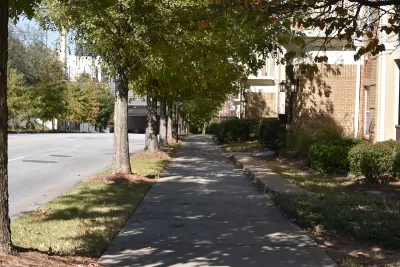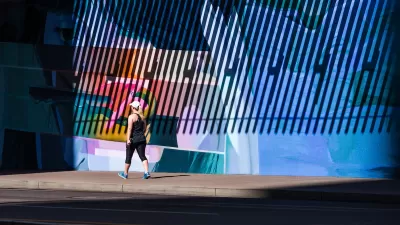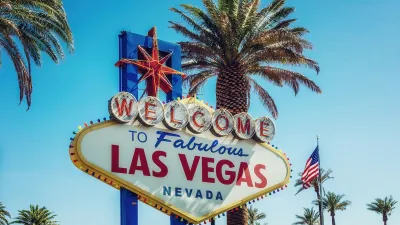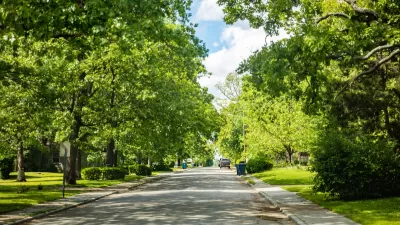New research suggests that cooling pavement treatments can actually make pedestrians standing on it feel hotter.

A popular new tool for cooling urban streets and sidewalks could have some unintended consequences, reports Linda Poon in Bloomberg CityLab. According to Poon’s article, “recent research in Phoenix has resurfaced a glaring tradeoff: The reflective coating can make pedestrians standing on the treated pavement feel even hotter.”
“When [professor V. Kelly Turner] and researchers at Arizona State University looked at the impacts of the first US program in Los Angeles, they found that around noon on a hot, dry day, a person standing on cool pavement could feel more than 7 degrees warmer than if they were to stand on uncoated asphalt. The mean radiant temperature, which is a measure of how humans experience the heat, fell in the afternoon but was still 3 degrees warmer.”
Those findings were reaffirmed by an Arizona State University study. However, Poon notes that “ASU’s study suggested minimal difference in mean radiant temperatures between sidewalks near traditional asphalt streets and those near reflective pavement,” meaning pedestrians walking on surfaces near coated streets but not directly on coated surfaces wouldn’t be affected.
For Turner, this points to a need to prioritize shade trees, a proven solution to urban heat, before trying more experimental solutions. But cooling pavement treatments have their place. By dramatically reducing surface temperatures, cool pavements can prevent burn injuries. “Perhaps a more pronounced effect of cool pavement technology that further appeals to cities is that it decreases thermal strain on the pavement, reducing cracking and helping extend its lifespan.” And one pavement treatment used in the Pacoima neighborhood of Los Angeles is showing promising results, with early research indicating that the treatment cools ambient temperature and doesn’t create glare in the same way as others.
Until more data on cool pavement coatings is available, experts believe cities should “carefully consider where to apply [them], and weigh both the costs and benefits alongside other interventions.”
FULL STORY: The Hottest Urban Heat Solution Comes With a Glaring Tradeoff

Study: Maui’s Plan to Convert Vacation Rentals to Long-Term Housing Could Cause Nearly $1 Billion Economic Loss
The plan would reduce visitor accommodation by 25,% resulting in 1,900 jobs lost.

North Texas Transit Leaders Tout Benefits of TOD for Growing Region
At a summit focused on transit-oriented development, policymakers discussed how North Texas’ expanded light rail system can serve as a tool for economic growth.

Why Should We Subsidize Public Transportation?
Many public transit agencies face financial stress due to rising costs, declining fare revenue, and declining subsidies. Transit advocates must provide a strong business case for increasing public transit funding.

How to Make US Trains Faster
Changes to boarding platforms and a switch to electric trains could improve U.S. passenger rail service without the added cost of high-speed rail.

Columbia’s Revitalized ‘Loop’ Is a Hub for Local Entrepreneurs
A focus on small businesses is helping a commercial corridor in Columbia, Missouri thrive.

Invasive Insect Threatens Minnesota’s Ash Forests
The Emerald Ash Borer is a rapidly spreading invasive pest threatening Minnesota’s ash trees, and homeowners are encouraged to plant diverse replacement species, avoid moving ash firewood, and monitor for signs of infestation.
Urban Design for Planners 1: Software Tools
This six-course series explores essential urban design concepts using open source software and equips planners with the tools they need to participate fully in the urban design process.
Planning for Universal Design
Learn the tools for implementing Universal Design in planning regulations.
Ascent Environmental
Borough of Carlisle
Institute for Housing and Urban Development Studies (IHS)
City of Grandview
Harvard GSD Executive Education
Toledo-Lucas County Plan Commissions
Salt Lake City
NYU Wagner Graduate School of Public Service





























